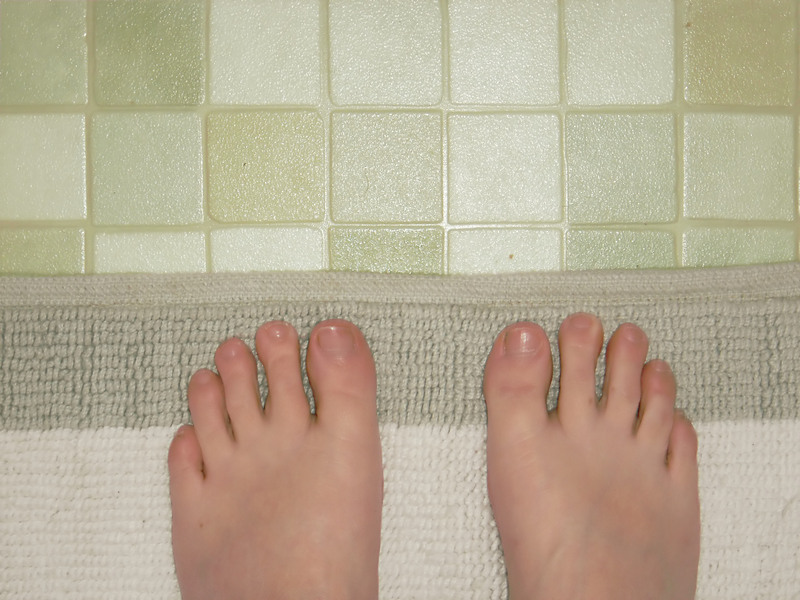Home Serenity: Ultimate Guide to Dust-Free and Allergy-Free Living
Posted on 05/10/2025
Home Serenity: Ultimate Guide to Dust-Free and Allergy-Free Living
Welcome to the ultimate guide on achieving home serenity by maintaining a dust-free and allergy-free living environment. In our modern world, where most people spend a significant amount of time indoors, the quality of the air inside your home plays a crucial role in your health and comfort. This in-depth article explores proven strategies, helpful tips, and must-know insights for creating the purest sanctuary possible.
Why Focus on Dust-Free, Allergy-Proof Living?
Invisible yet omnipresent, dust and allergens are sneaky culprits behind sneezing, watery eyes, headaches, and even chronic respiratory issues such as asthma. Achieving serenity at home isn't just about aesthetics--it's about fostering a healthier lifestyle for you and your loved ones.
Benefits of an Allergen-Free, Clean Home
- Better Respiratory Health: Clean air reduces allergy and asthma triggers.
- Improved Sleep Quality: Allergens and dust mites can cause congestion and disrupt rest.
- Enhanced Mental Wellbeing: Studies link clean, organized spaces to lower stress and anxiety.
- More Inviting Atmosphere: A fresh-smelling, dust-free home is welcoming for guests and family alike.

Understanding Household Dust & Allergens
Dust is a complex mixture of dead skin cells, textile fibers, pollen, pet dander, mold spores, and tiny insect fragments. Common allergens--substances that can trigger allergic reactions--often hitch a ride on these dust particles, circulating through your living space.
The Top Indoor Allergens to Watch Out For
- Dust Mites: Microscopic creatures thriving in bedding, carpets, and upholstered furniture.
- Pet Dander: Flakes of skin, saliva, and urine from cats, dogs, and other animals.
- Mold Spores: Released by mold growth in damp areas such as bathrooms and basements.
- Pollen: Particles carried in from outdoors on hair, fur, and clothing.
- Cockroach Droppings: Found especially in kitchens and warm, damp locations.
Comprehensive Steps for a Dust-Free and Allergy-Free Living Space
1. Start with Regular Cleaning Routines
Consistency is key. Adopting a thorough, regular cleaning routine is the most effective way to minimize dust and allergens in your home.
- Vacuum Frequently: Use a vacuum cleaner equipped with a HEPA filter to trap fine particles and prevent them from recirculating.
- Wet Dusting: Use a slightly damp microfiber cloth to dust surfaces. Dry dusting just spreads particles around!
- Mop Hard Floors: Mopping is essential for hardwood, tile, and laminate surfaces to capture dust that sweeping leaves behind.
- Wash Beddings Weekly: Sheets, pillowcases, and blankets harbor dust mites--wash them in hot water at least once a week.
2. Control Indoor Humidity
Humidity control is vital for allergy prevention--dust mites and mold thrive in moist environments. To maintain optimal air quality:
- Use Dehumidifiers: Keep indoor humidity between 30% and 50%. Dehumidifiers are particularly useful in basements and bathrooms.
- Ventilate Regularly: Open windows for cross-ventilation or use exhaust fans in bathrooms and kitchens.
- Fix Leaks Promptly: Repair any plumbing or roof leaks to prevent water accumulation.
3. Choose the Right Air Filtration Systems
High-Efficiency Particulate Air (HEPA) filters are considered the gold standard for trapping airborne allergens and dust, being able to capture particles as small as 0.3 microns.
- Air Purifiers: Invest in a quality air purifier with a true HEPA filter, especially for bedrooms and living spaces. Regularly replace or clean the filters according to manufacturer guidelines.
- HVAC Maintenance: Change HVAC filters every 2-3 months and consider professional air duct cleaning every few years.
4. Opt for Dust-Resistant Furniture and Decor
- Minimal Upholstery: Choose leather, vinyl, or tightly woven fabrics that don't trap dust like velour or chenille.
- Hard-Surface Floors: Carpets and thick rugs harbor dust mites; hardwood, laminate, or tile are easier to keep clean.
- Washable Rugs: Select small area rugs that can be machine-washed regularly.
- Simple Window Treatments: Use washable curtains or blinds instead of heavy drapes.
5. Establish No-Shoe Policies
Shoes track in pollen, dirt, and bacteria from outside. By implementing a no-shoes-inside rule, you can significantly reduce dust imports. Place a shoe rack at the entryway and provide indoor slippers for family and guests.
6. Keep Clutter to a Minimum
Cluttered spaces create more surfaces for dust to accumulate. Less clutter means less dust--plus a calmer, more serene home environment.
- Adopt a Minimalist Approach: Store items in closed cabinets and bins.
- Declutter Regularly: Sort through magazines, books, and decorative items every few months.
Special Considerations for Allergy Sufferers
Pet Owners
- Bathtime: Bathe pets regularly to minimize dander.
- Pet-Free Zones: Keep bedrooms and beds off-limits for pets if possible.
- Grooming: Brush pets outdoors to reduce indoor hair and dander accumulation.
Bedding and Mattress Choices
- Allergen-Proof Covers: Invest in covers that encase pillows and mattresses, blocking dust mites.
- Hypoallergenic Materials: Opt for synthetic (rather than feather) pillows and comforters.
Managing Mold
- Quick Drying: Always dry bathroom and laundry rooms thoroughly after use.
- Mold-Resistant Paint: Apply these in high-moisture areas.
- Check Ventilation: Ensure exhaust fans vent outside and not into attics or walls.
Children's Rooms
- Limit Stuffed Animals: These collect dust; choose washable toys or store them away when not in use.
- Wash Bedding Frequently: As with adult bedrooms, hot water laundering is best.
- Declutter: Clear out unused toys and books regularly.
Smart Home Technology for Cleaner Living
Modern technology makes it easier than ever to maintain a pristine, dust-free home. Here are some of the best technological helpers:
- Robotic Vacuum Cleaners: Schedule daily runs to tackle dust before it settles.
- Smart Air Quality Monitors: Track pollutant and particulate levels to adjust cleaning routines as needed.
- Programmable Thermostats: Maintain optimal humidity and temperature for allergy prevention.
- Automated Window Shades: Reduce pollen and dust ingress by keeping windows closed during peak times.
Natural Methods for Allergy and Dust Reduction
Chemical cleaners can be irritating for sensitive individuals. Here's how to keep your sanctuary serene and healthy--without harsh chemicals.
- Simple Cleaning Solutions: A mix of vinegar, water, and baking soda cleans surfaces and cuts through grease while being gentle on allergies.
- Houseplants: Spider plants, peace lilies, and snake plants are natural air purifiers. Note: Some plants can trigger allergies--choose varieties carefully.
- Open Windows (When Safe): Letting in fresh air can help circulate out indoor pollutants during low-pollen times.
- Essential Oils: Peppermint, eucalyptus, and tea tree oils have dust-mite-repelling properties, but use cautiously to avoid scent sensitivities.
Year-Round Maintenance Plan for Dust and Allergen Defense
Keeping your living space serene and allergen-free is an ongoing process. Here's a maintenance schedule to help you stay on track all year:
Weekly Tasks
- Vacuum all floors and carpets with a HEPA-filter vacuum
- Mop hard surfaces
- Change and wash bed linens on hot setting
- Dust all surfaces, starting from top shelves down
Monthly Tasks
- Deep clean area rugs
- Wash curtains and blinds
- Wipe down walls and baseboards
- Change HVAC filters if needed
Seasonal Tasks
- Professional carpet and upholstery cleaning
- Clean air ducts and vents
- Inspect for mold growth in hidden, moist areas
- Rotate and deep-clean mattress; wash encasements

Frequently Asked Questions
How can I tell if my home has a dust or allergy problem?
Common signs include sneezing, coughing, or stuffy nose that improves when you leave the house, visible dust buildup, or waking up with allergy symptoms. An indoor air quality monitor can provide more data.
Should I consider professional air testing?
If allergy symptoms persist despite your best cleaning efforts, professional air quality testing can pinpoint hidden mold, volatile organic compounds (VOCs), or other pollutants for targeted solutions.
Are air purifiers worth it for allergy sufferers?
Absolutely! HEPA air purifiers greatly reduce airborne dust, pollen, and dander, especially when placed in bedrooms and high-traffic areas.
Conclusion: Create Your Tranquil, Healthy Home Haven
Attaining pure home serenity and an allergy-free, dust-free lifestyle is attainable with consistent, smart practices. By cleaning regularly, controlling humidity, investing in filtration, minimizing clutter, and embracing smart home tools, you can transform your living space into a true sanctuary. The effort is well worth it--not only for your health and comfort but also for the peace of mind that comes with knowing your home is a safe haven for everyone who walks through the door.
Ready to breathe easier and enjoy true home serenity? Start implementing these expert tips today, and embark on your journey toward the ultimate dust-free and allergy-proof living!
```



